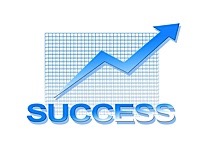
Tiny crystals called quantum dots emit intense, sharply defined colors. Now researchers have made LED displays that use quantum dots. Five years ago, QD Vision demonstrated its first, rudimentary one-color displays, using the nanoscale crystals. This year it demonstrated a full-color display capable of showing video. The company says it could be another five years before the technology appears in commercial displays. Samsung might get there first—it's also developing quantum-dot displays, and demonstrated a full-color one in February.
Quantum-dot displays could use far less energy than LCDs. Another ingenious way to reduce energy use is make displays that emit no light at all, but instead reflect ambient light, an approach being taken by Qualcomm with its full-color Mirasol displays, which use only a tenth of the energy of an LCD. The technology has started to appear in tablet computers in South Korea.




















